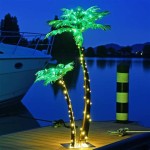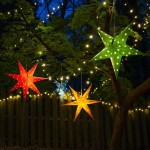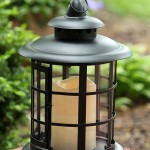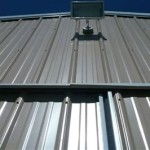Lighting Requirements For Safety and Security of Outdoor Workplaces
Outdoor workplaces present unique challenges when it comes to lighting requirements. The absence of natural light during nighttime hours and the potential for adverse weather conditions demand careful consideration of lighting design to ensure the safety and security of workers. Inadequate lighting can lead to accidents, injuries, and security breaches, making it crucial to implement effective lighting strategies that meet industry standards and best practices.
Importance of Adequate Lighting in Outdoor Workplaces
Adequate lighting in outdoor workplaces is paramount for several reasons. Firstly, it enhances worker visibility, significantly reducing the risk of accidents and injuries. By providing sufficient illumination, workers can clearly see their surroundings, obstacles, and potential hazards, minimizing the likelihood of slips, trips, and falls. Secondly, proper lighting enhances workplace security, deterring criminal activity and potential threats. Well-lit areas create a sense of vigilance and make it more challenging for intruders to operate unnoticed. Finally, adequate lighting promotes worker productivity and morale. A brightly lit environment reduces fatigue and eye strain, allowing workers to perform their tasks more efficiently and comfortably.
Key Lighting Factors for Outdoor Workplaces
When designing outdoor workplace lighting systems, various key factors must be considered to ensure optimal performance and safety. These include:
1. Illuminance Levels
Illuminance refers to the amount of light that falls on a surface, typically measured in lux (lx). The required illuminance levels vary depending on the specific task being performed and the potential hazards present. For instance, high illuminance levels are required for tasks involving intricate details or delicate equipment, while lower levels might suffice for general walkways and parking areas. Industry standards and regulations, such as the Occupational Safety and Health Administration (OSHA) guidelines, provide recommendations for minimum illuminance levels in various workplace settings.
2. Light Distribution
The distribution of light is crucial in outdoor workplaces, ensuring that all areas are adequately illuminated. Uniformity of illumination is essential to prevent dark spots and shadows, which can create safety hazards. Different lighting fixtures have unique light distribution patterns, such as floodlights for wide area coverage and spotlights for focused illumination. Choosing the appropriate fixtures and their placement is essential to ensure consistent and effective light distribution.
3. Color Temperature
Color temperature, measured in Kelvin (K), refers to the color appearance of light. Different color temperatures create different moods and visual effects. Warm white light (2700-3000K) is often preferred for residential settings, while cooler white light (4000-4500K) is commonly used in industrial and commercial spaces. For outdoor workplaces, a color temperature between 3000K and 4000K is generally suitable, providing visibility and clarity without creating excessive glare. The preferred color temperature also depends on the specific task, the time of day, and potential glare from surrounding light sources.
4. Glare Control
Glare is the excessive brightness that can cause discomfort, eye strain, and reduced visibility. It can occur from direct sunlight, improperly positioned light fixtures, or reflective surfaces. To minimize glare, it is essential to choose lighting fixtures with suitable shielding, such as louvers or diffusers, and to position them strategically to avoid glare. Using light sources with low glare ratings can further reduce discomfort and improve safety.
5. Energy Efficiency
Energy efficiency is a critical consideration in outdoor workplace lighting. Using energy-efficient light sources, such as LED bulbs, and optimizing lighting control systems can significantly reduce energy consumption and operating costs. This not only benefits the environment but also enhances sustainability and financial efficiency for the organization.
Security Lighting Considerations
Beyond safety, lighting plays a crucial role in enhancing security in outdoor workplaces. Here are some key considerations for security lighting:
1. Motion Sensors
Motion sensors provide a cost-effective and efficient way to activate lights only when movement is detected. This not only saves energy but also creates a sense of vigilance by illuminating areas only when necessary. Motion sensors can be installed in strategic locations such as parking lots, walkways, and perimeter fences, providing a deterrent against intruders.
2. High-Mast Lighting
High-mast lighting involves using tall structures with powerful light sources to illuminate large areas. This is particularly effective for parking lots, sports fields, and other expansive outdoor spaces. High-mast lights provide a wide area of illumination, making it difficult for intruders to conceal themselves and enhancing overall security.
3. Security Cameras
Security cameras are an integral part of any comprehensive security system. When combined with effective lighting, they provide a powerful deterrent and allow for the monitoring and recording of activities in the workplace. High-quality cameras with night vision capabilities ensure clear images even in low-light conditions. The placement of cameras should be strategic, focusing on high-risk areas and entry points.
Conclusion
Adequate lighting is essential for ensuring the safety and security of outdoor workplaces. By carefully considering factors such as illuminance levels, light distribution, color temperature, glare control, and energy efficiency, organizations can create a safe and well-lit environment for workers, deterring accidents, injuries, and security threats. By implementing appropriate lighting solutions and integrating security measures, organizations can significantly enhance the safety and security of their outdoor workplaces, promoting a productive and secure environment for all.

Outdoor Lighting Standards

Workplace Lighting Standards

Workplace Lighting Standards Osha What You Need To Know

Workplace Lighting Standards

Workplace Lighting Standards

Workplace Lighting Standards

Workplace Lighting Standards

Holiday Safety Esa

How To Create A Lighting Plan For Night Construction Pros

Photo Of The Day Position For Safety And Comfort Tips
Related Posts







